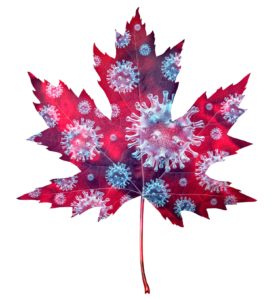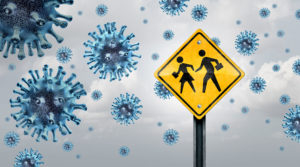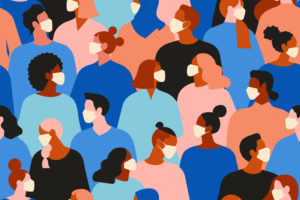Why use a non-medical mask or face covering
- COVID-19 can be spread from infected individuals who have a few or no symptoms and are unaware that they may be infected.
- A non-medical mask or face covering is intended to protect others from your infectious droplets.
- It may also prevent other people’s droplets from landing in your mouth or nose.
- Consider wearing one in areas where community transmission of COVID-19 is occurring and where physical distancing may not be possible, e.g., public transit, smaller grocery stores or pharmacies.
What kind of non-medical mask or face covering should I use
- No specific design or material is known to be better than others.
- The Public Health Agency of Canada provides guidance on how to make cloth masks.
- Make sure each cloth mask is made of at least two layers and can be laundered multiple times without losing shape or deteriorating.
- Don’t offer to children under the age of two, or individuals who are unable to wear it e.g., medical condition, or unable to wear/remove properly.
Wearing non-medical masks or face coverings may be an added way to protect others around you, particularly where physical distancing may be challenging (e.g., on public transit, while shopping). Here are some tips on what masks and face coverings do, when you could consider using one, and how to wear it safely.
If you or a household member has symptoms of, or is suspected to have COVID-19, follow the guidance for self-isolation.
How to wear a non-medical mask or face covering
- Clean your hands with soap and water or alcohol-based hand sanitizer for at least 15 seconds.
- Make sure it fits snugly (no gaps between mask and face) to cover the nose and mouth, i.e., from below the eyes to around the chin.
- Secure it with ties or ear loops so that it is comfortable, and doesn’t hinder breathing and vision.
- Avoid touching the front of the mask or face covering while wearing it – if you do, clean your hands immediately.
- Wear it as long as it is comfortable, and remove when it becomes soiled, damp, damaged or difficult to breathe through.
- Do no share your mask with others.
How to remove and care for non-medical masks or face coverings that can be cleaned
- Remove carefully by grasping the straps only and place directly in the laundry.
- If you have to use it again before washing, ensure that the front of the mask folds in on itself to avoid touching the front. Store it in its own bag, e.g., paper bag.
- Immediately clean your hands with soap and water or alcohol-based hand sanitizer for at least 15 seconds.
- Machine wash with hot water and with regular detergent, which should kill any viruses.
- The Ministry of Health has more information on the use and care of non-medical masks and face coverings.
Note
- Non-medical masks and face coverings may not provide complete protection against viral particles, especially if they fit loosely.
- As they are not tested to recognized standards, their effectiveness will vary.
Source: The information in this document is current as of May 21, 2020





